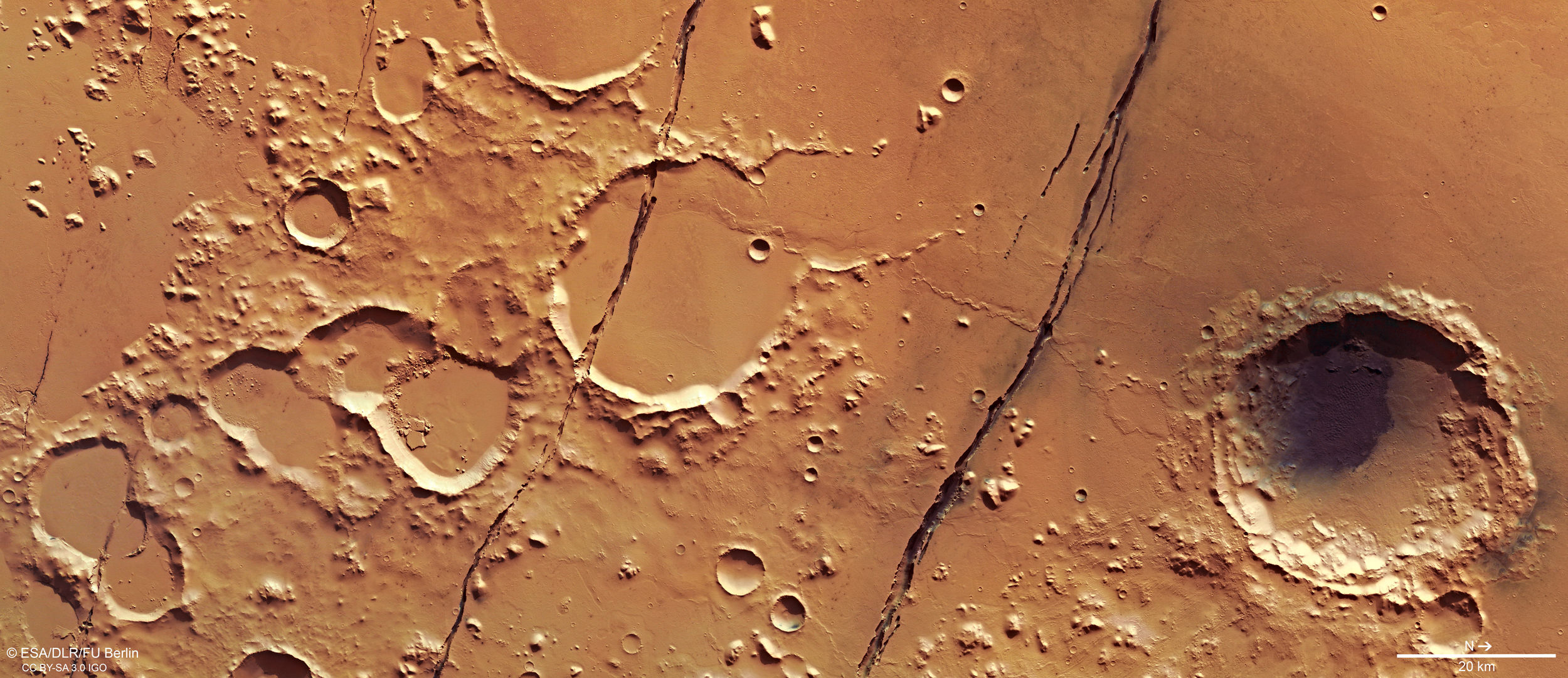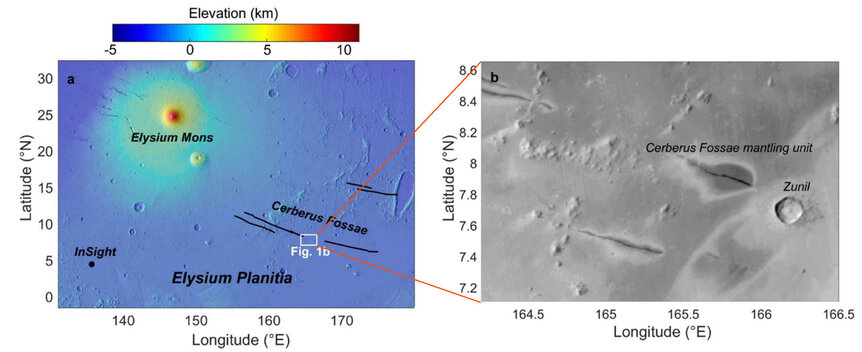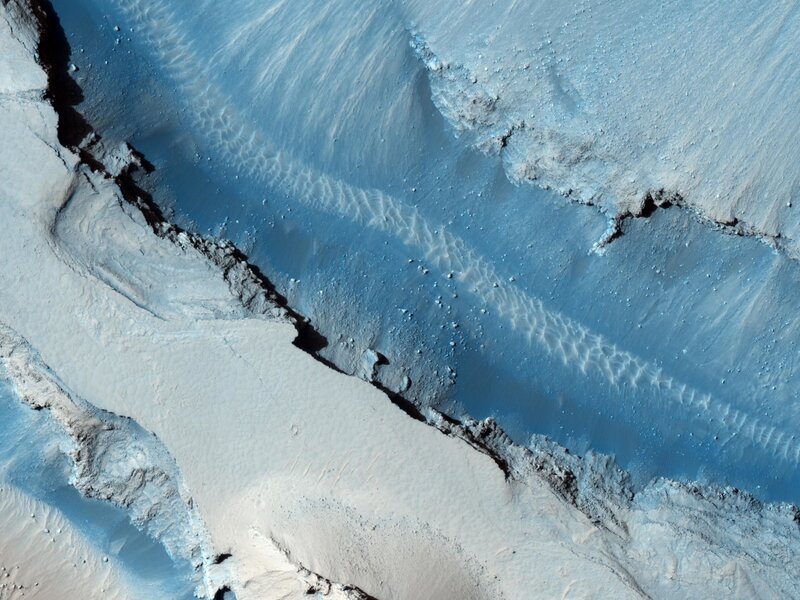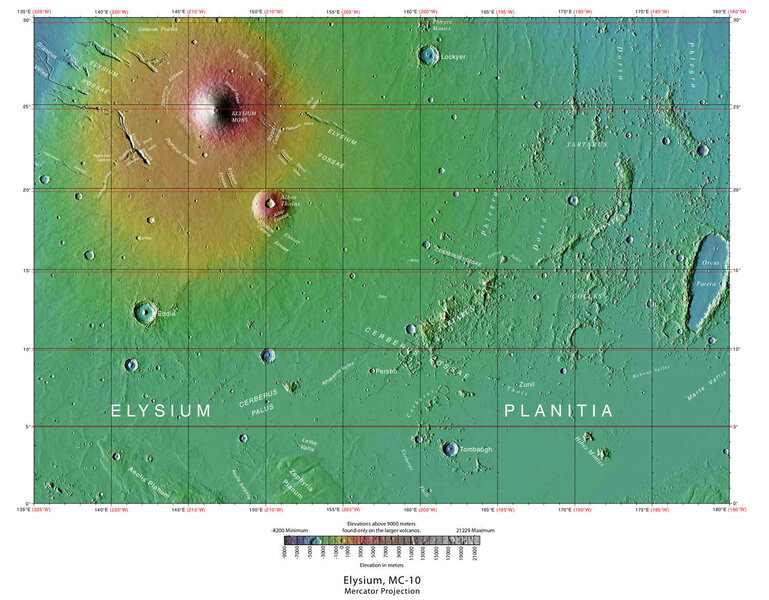Create a free profile to get unlimited access to exclusive videos, sweepstakes, and more!
More evidence that Mars is volcanically active right now. Today.

New research looking at images and other measurements made from orbit strongly suggests that Mars may still be volcanically active now. Like, today now. This fits in pretty well with other indicators that the Red Planet may not yet be the Dead Planet.
The observations were made using various instruments on board the wonderful Mars Reconnaissance Orbiter (or MRO), which has been circling the planet since 2006. The images targeted an area called Elysium Planitia (literally the Plains of Heaven), specifically a region called Cerberus Fossae that's loaded with parallel cracks in the Martian crust.
These fissures in the crust are called fossae, and are due to tectonic extension, where the ground is pulled apart from pressure under the surface. As I've written before:
What caused these cracks? They are most likely due to tectonic extension, when the surface is stretched for some reason. You've seen something like this before if you've ever made a cake or muffins. The top will brown and harden first before the middle. As the interior of the cake cooks, it expands, pushing up against the already-cooked top. That pressure can cause the top to split and pull apart, creating a crack or rift.
The surface of Mars is littered with volcanic material globally, but volcanism peaked on the planet probably 2–3 billion years ago. However, there has been some evidence that activity continued into geologically recent times; some features have been dated to be as young as 2 million years.
A team of planetary scientists studied one of these cracks, an unnamed 34-kilometer long fissure some hundreds of meters wide, and it stands out in the images. There are lobes or wings of dark material extending for many kilometers on either side of the fissure along about half its length. The surface farther out around it is much lighter in tone, probably covered in fine dust.
Using other instruments on board MRO they found the material is rich in pyroxene, a mineral commonly found in volcanic flows. They also found that the material has a high thermal inertia, meaning it's slow to warm up during the day and to cool at night. Plain old rocks have low thermal inertia, heating and cooling rapidly. This indicates the material is fluffier, grainier, typical of some volcanic eruptions.
The total amount of dark material there is about 20 million cubic meters, or a cube roughly 270 meters on a side, but it's spread out over a lot of area, and is probably up to a few dozen centimeters thick near the fissure (this was determined by looking at craters from impacts that happened after the material was deposited; they reveal how deep the material is).
The scientists conclude that this is likely a deposit from a pyroclastic flow, the most terrifying thing I can imagine when talking about volcanoes. These are incredibly hot gas and particle flows (common on Earth when, for example, an explosive plume of ash collapses) that can move at hundreds of kilometers per hour across the ground, burning and suffocating everything in their path.
They note it's possible this isn't volcanic at all, but actually dust and sand blown out of the fissure by wind, but they judge this unlikely. The wind blows to the southwest in this part of Mars, and in the image you can see the lobes extend to the SW and NE. The SW lobe stretches farther than the NE lobe (about 12 versus 6 km) but that's consistent with it being blown by wind after it formed; the fact that material is to the NE at all indicates this isn't a solely wind-driven feature.
Where this gets really interesting is when they tried to figure out how old it is. One way to do this is to look at craters: The longer an area is exposed the more craters it accumulates. By counting craters and measuring their sizes you can get an estimate of the age of surface... and what they find is that it may be roughly 50–200 thousand years old.
Whoa. Geologically speaking, that's now.
The fissure appears to point toward the 10-km-wide crater Zunil that's been dated to 100,000–1 million years old. Perhaps the impact weakened the rock there, allowing magma to rise up through the crack. I'm speculating, though. The authors don't make any connection between the two other than relative youth.
Also interesting? NASA has a lander called InSight on the other side of Elysium Planitia, about 1700 km to the southwest of this area. InSight has a seismograph, and it has detected quite a few marsquakes, including two fairly big ones (about magnitude 3) in Mach 2021 coming from the direction of Cerberus Fossae! These are consistent with magma moving around under the crust there.
Together, this evidence points toward possible magma activity going on in that area right now.
That's pretty interesting. The pyroclastic deposit seen around the fissure may indicate the magma hit some water ice on its way up. When that happens the ice turns to steam that expands explosively, which could have been what propelled the material so far. But if that's the case that means there's a source of warmth and a source of water under the surface there.
Hmmm. NASA is looking for evidence of life on Mars, and not just ancient fossils but extant life, things living there now. Cerberus Fossae might be a good place to eventually look. This is pretty speculative, don't get me wrong, but it's interesting.
It seems clear that Mars is at least a little active today. The questions are how much, and where, and what this means for geology and biology on the planet.






























